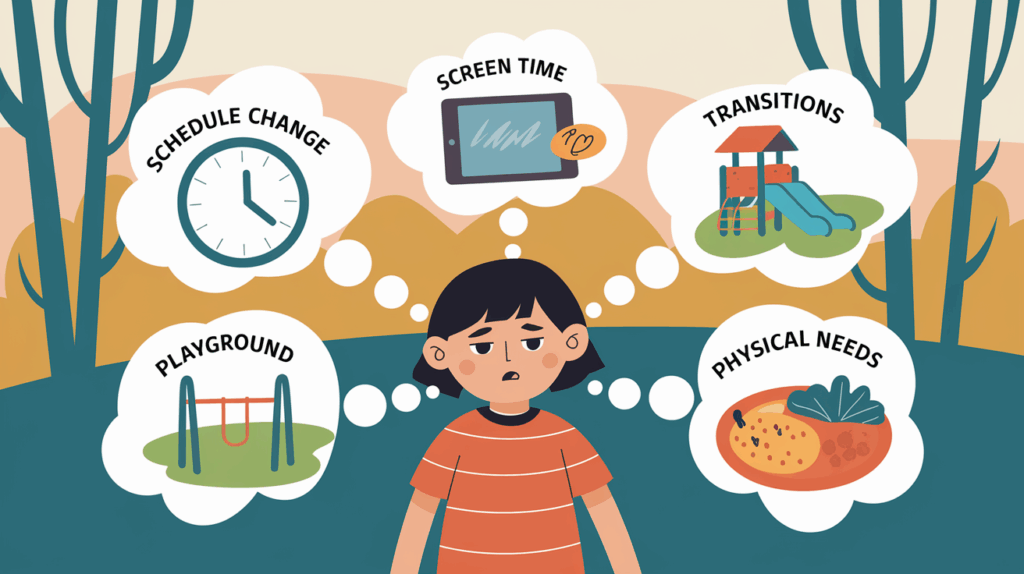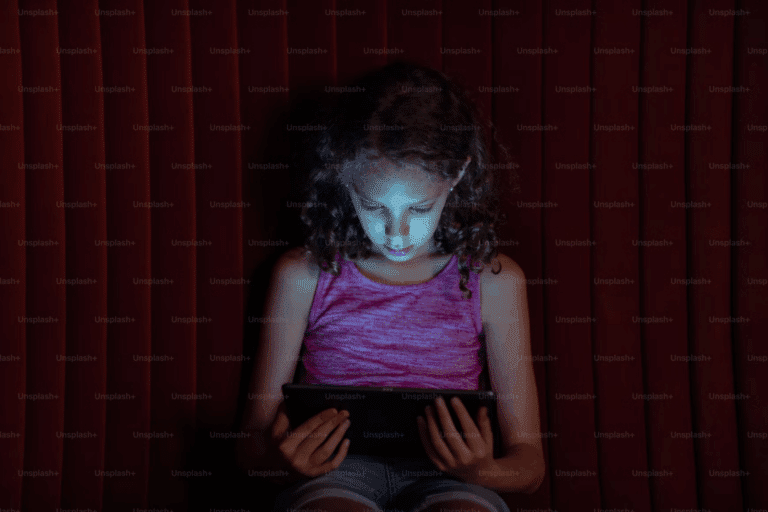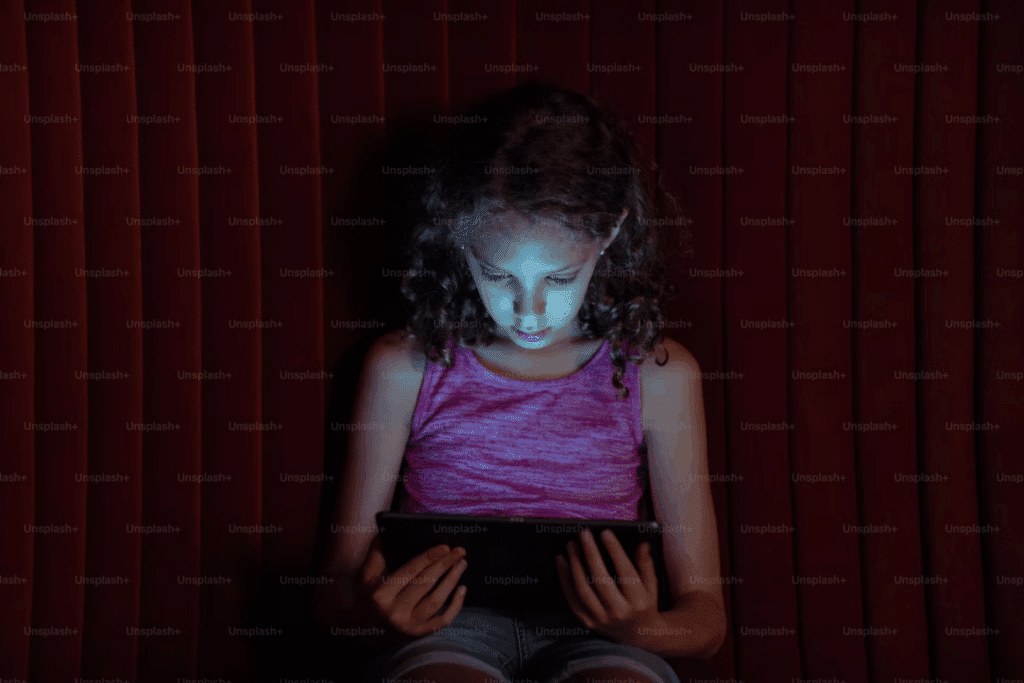Parents often notice their children going from calm to a complete meltdown in seconds. This is a common situation in many households. It’s frustrating when a child seems fine one moment and then falls apart the next.
This happens because children have something called a “window of tolerance” – the mental space where they can handle life’s ups and downs. When kids step outside this window, they react in ways that leave parents confused and exhausted.
The good news is that parents can learn to spot the signs before a breakdown occurs. By understanding a child’s window of tolerance, adults can help them stay balanced and teach them skills they’ll use for years.
This blog will show how to recognize these signals and what to do when a child starts to tip over the edge.
What Is the Window of Tolerance
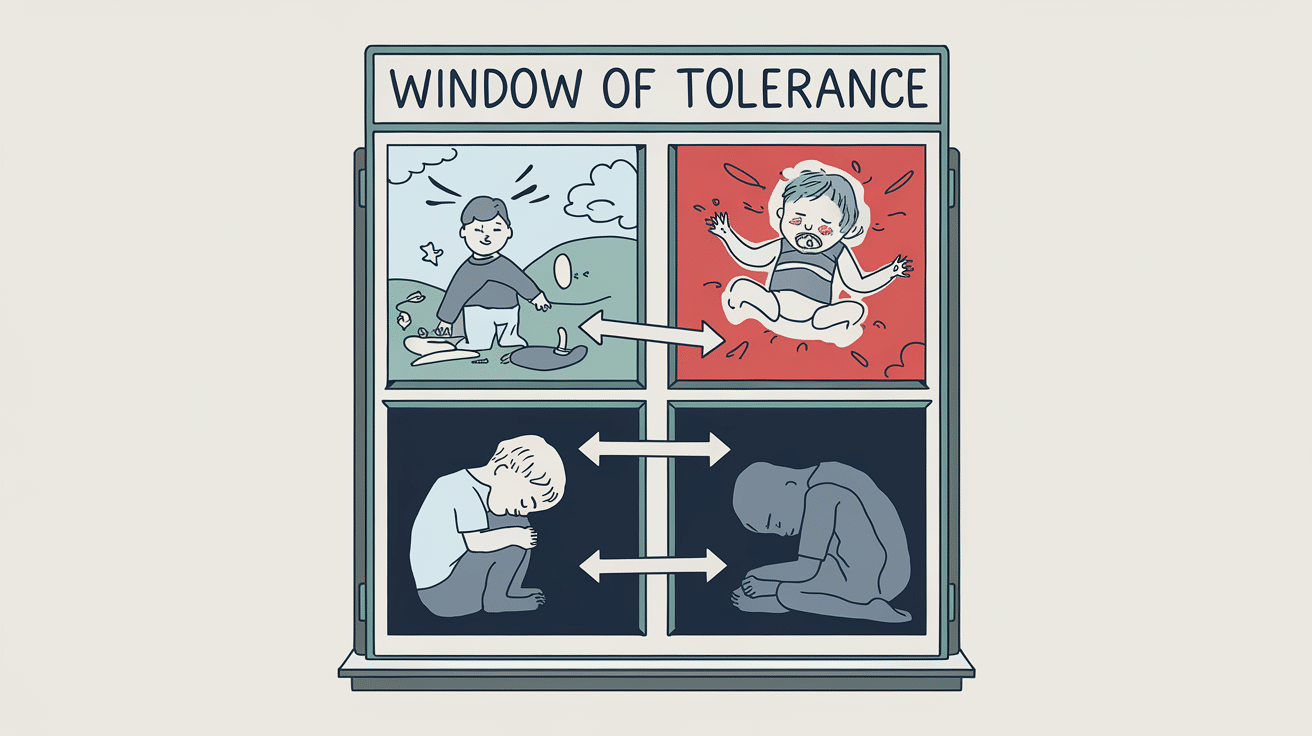
The window of tolerance refers to the mental state in which a child can effectively manage stress and emotions.
Think of it as a comfort zone where kids can think clearly, learn well, and respond to situations in a balanced way. This concept helps explain why children sometimes react so strongly to seemingly small problems.
When children stay within their window of tolerance, they can listen, focus, and solve problems. They show flexibility in their thinking and can bounce back from minor setbacks. Their reactions match the situation at hand, not going overboard with anger or shutting down completely.
Each child has a different-sized window. Some children naturally have wider windows and can handle more stress before reacting.
Others have narrower windows and may tip into emotional extremes more quickly.
Factors like age, temperament, past experiences, and current health all affect a child’s window size. A well-rested child with a stable routine typically has a wider window than one who is tired, hungry, or facing big changes.
Parents who understand this concept can better support their children.
They can spot early warning signs that a child is approaching the edge of their window and take steps to help them stay regulated.
The Color Zones of Children’s Emotional States
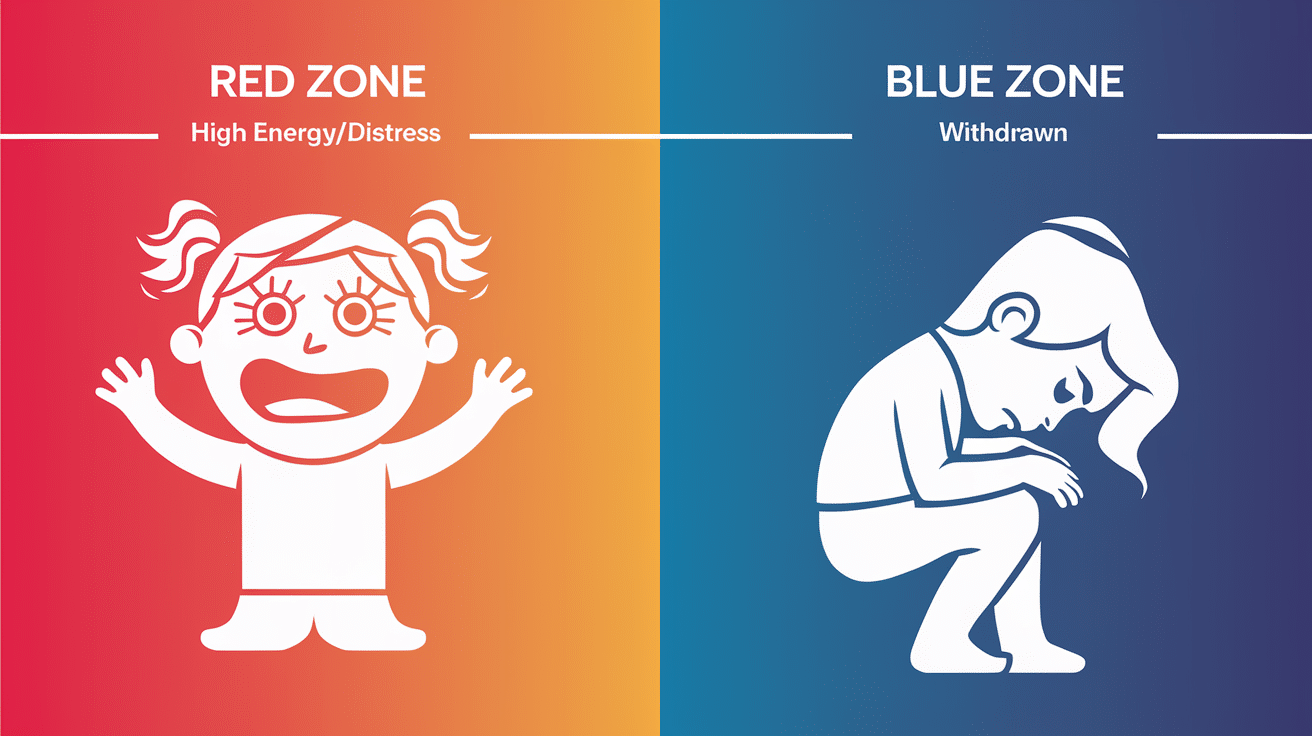
Children move through various emotional states throughout the day. These states can be grouped into color zones that help parents understand what’s happening when emotions get big.
The Red Zone: Hyper-Arousal
When children enter the red zone, their bodies flood with stress hormones. This happens when they feel threatened, overwhelmed, or angry. In this state, you might see yelling, hitting, throwing things, or intense crying.
Their breathing speeds up, and they often can’t listen to reason.
To help a child in the red zone, focus first on safety and calm. Speaking softly, giving space, and avoiding demands help the child return to a more balanced state. The goal isn’t to fix the problem immediately, but to help the child calm their body first.
The Blue Zone: Hypo-Arousal
In contrast, the blue zone represents a shutdown state. Children in this zone might seem distant, quiet, or “checked out.” Their energy levels drop, and they may appear sluggish or unwilling to engage.
This is the body’s way of protecting itself by withdrawing.
| Zone | Physical Signs | Behavioral Signs | Helpful Approaches |
|---|---|---|---|
| Red Zone | Rapid breathing, flushed face, tense muscles | Screaming, hitting, running, throwing | Speak softly, provide space, and avoid demands |
| Blue Zone | Slow movements, flat facial expressions, and low energy | Withdrawal, silence, lack of eye contact, hiding | Gentle engagement, physical comfort, patient presence |
Understanding these zones helps parents respond effectively rather than react emotionally to children’s behavior.
Understanding Triggers: What Pushes Kids Out of Their Window
Children get pushed out of their window of tolerance by various triggers. These triggers act like buttons that, when pressed, send kids into either the red zone or the blue zone.
Understanding what pushes a child outside their window helps parents prevent meltdowns before they happen.
Common triggers fall into several categories:
Physical needs:
When basic needs aren’t met, children become more sensitive. This includes:
- Hunger or thirst
- Lack of sleep or rest
- Physical discomfort or pain
- Too much noise or visual stimulation
Emotional challenges:
Children often can’t name their feelings, but still feel them strongly.
- Big feelings, they don’t understand.
- Feelings of rejection or disappointment
- Fear of failure or making mistakes
Social situations:
Interactions with others can be hard for kids.
- Conflicts with siblings or friends
- Feeling left out or not included
- Too many social demands at once
Environmental factors:
The world around children greatly affects them. Changes in routine or schedule can make children feel unsafe or anxious because they don’t know what to expect next.
Too much screen time often overstimulates young brains, making it harder for kids to process emotions. Transitions between activities may trigger resistance or meltdowns, especially for children who need time to adjust to new tasks.
Increasing a Child’s Window of Tolerance
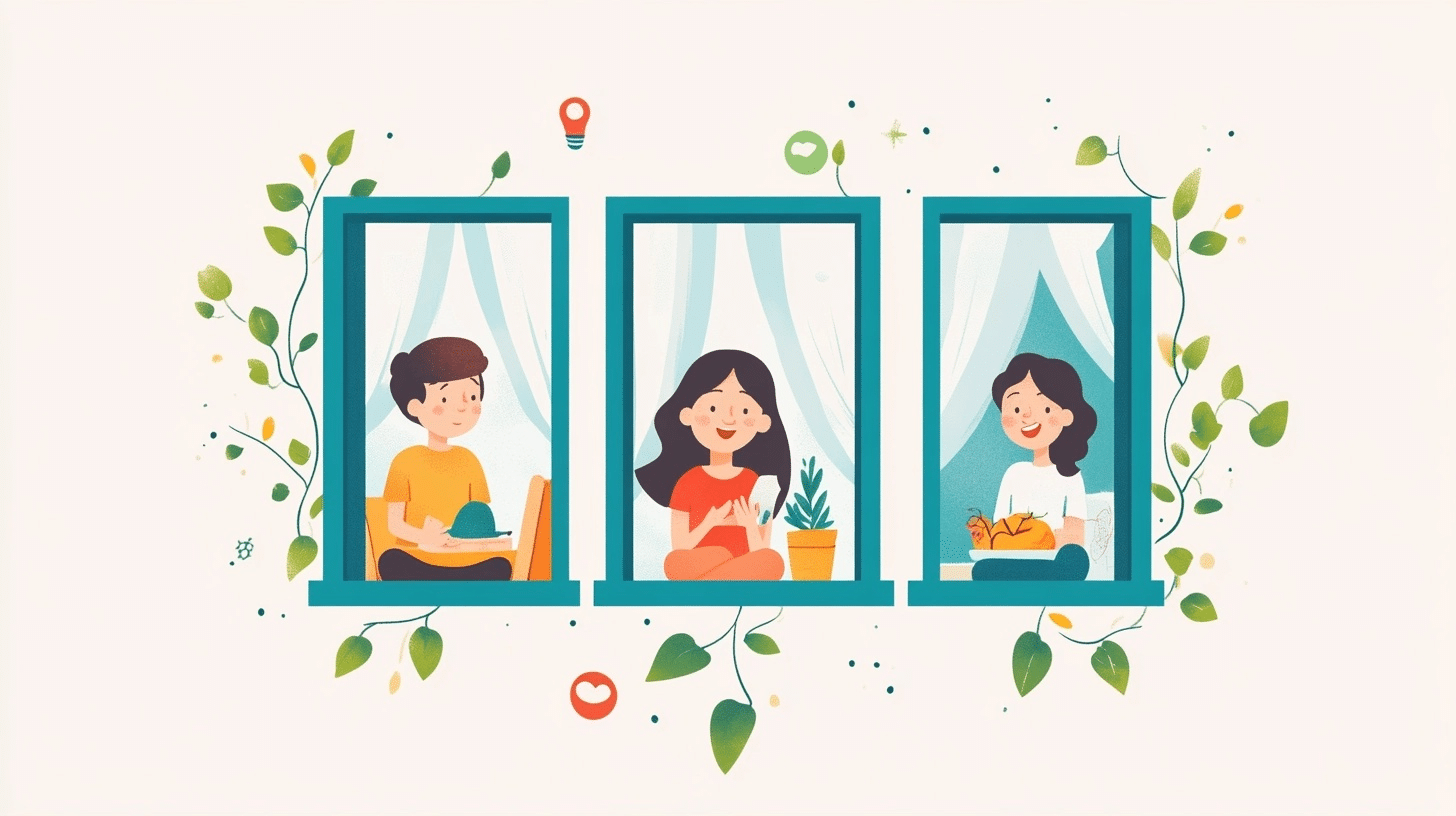
Helping children widen their window of tolerance takes time and patience. By using consistent strategies, parents can gradually build a child’s capacity to handle stress and big emotions.
This doesn’t happen overnight, but with regular practice, children develop stronger emotional muscles.
- Create predictable routines that give children a sense of safety and control.
- Teach children to name their feelings using simple, age-appropriate language.
- Model calm behavior even when you feel frustrated or upset.
- Practice breathing exercises together during calm moments.
- Use visual tools like feeling charts or thermometers to help kids track their emotions.
- Ensure children get enough sleep, healthy food, and physical activity.
- Limit exposure to screens and stimulating environments when children seem on edge.
Practical Tools and Techniques
When children struggle with emotional regulation, having practical methods to help them is valuable. These tools support children in expanding their ability to manage their feelings and stay within their window of tolerance.
Sensory Toys
Children often experience sensory overload when too many sights, sounds, or touches bombard them at once. This overwhelming input can quickly push a child outside their window of tolerance, leading to meltdowns or shutdown.
Tactile toys help children regulate their nervous systems. Items like sand tables, sensory bins filled with rice or beans, or squishy stress balls give children something to focus on.
The physical sensation creates a calming effect that helps bring children back to a balanced state.
Family Play
Playing together as a family builds more than just fun memories. Through play, children learn important skills for managing emotions.
Board games teach turn-taking and handling disappointment. Pretend play allows children to work through scenarios that might be challenging in real life.
Regular family playtime allows children to practice problem-solving and self-regulation in a safe, supportive environment. When parents join in, they can gently guide children through difficult emotions that arise during play.
Reacting From a Non-Judgmental Place
When children act out, it’s easy to focus on the behavior rather than the cause. Taking a step back to validate feelings makes a big difference in helping children regulate.
Phrases like “I see you’re feeling frustrated” acknowledge emotions without judgment.
This validation helps children feel understood and builds their emotional vocabulary.
Looking beyond the behavior to understand why a child is reacting helps parents respond in ways that truly address the underlying needs.
Seeking Professional Help: Signs of a Narrowed Window

Not all struggles with emotional regulation require professional help. Many children work through these challenges with family support.
However, some signs suggest that a child might need extra assistance. Watch for patterns that may indicate a persistently narrow window of tolerance in your child’s behavior and emotional responses.
- Your child has frequent meltdowns that last longer than typical for their age. These outbursts might seem more intense than what other children experience.
- Your child shows extreme reactions to minor changes or disappointments. Small things like changing plans or not getting the right color cup can lead to major upsets.
- Your child struggles to return to a calm state, even with your help. They might stay upset for hours rather than minutes.
- Your child avoids social situations or everyday activities because they feel too overwhelming.
- Your child’s ability to function at school, with friends, or at home is affected by their emotional reactions.
- Your child seems stuck in either high alert (red zone) or shutdown (blue zone) for long periods.
Wrapping It Up
Understanding the window of tolerance of kids gives you powerful tools to help guide big feelings. By recognizing when kids move into red or blue zones, you can respond with patience instead of frustration.
Remember the main takeaways: identify your child’s unique triggers, use practical techniques like sensory tools and non-judgmental responses, and know when professional help might be needed.
The goal isn’t perfect behavior but rather helping children build their capacity to handle life’s challenges.
This emotional skill-building supports them not just today but throughout their lives.
What’s your next step? Try keeping a simple trigger log for a week. Notice patterns and implement one calming strategy from this article. Share your experiences in the comments – what works for your child might help another parent, too!

